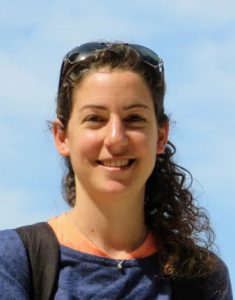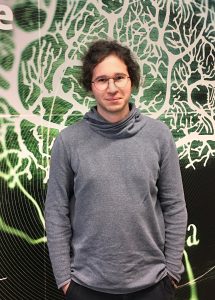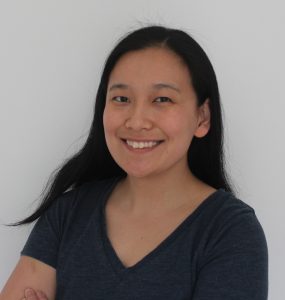Best Poster Awards – EMBO|EMBL Symposium: Systems Genetics: From Genomes to Complex Traits
The first EMBO|EMBL Symposium: Systems Genetics: From Genomes to Complex Traits (29 Sep – 2 Oct 2019) brought together over 150 international researchers to discuss how genetic variation alters molecular mechanisms to cause phenotypic changes amongst individuals, including quantitative traits and human disease.
From the 77 posters that were presented on-site, 3 were selected as the winners after a shortlist round by popular vote, followed by a selection round by the conference organisers.
Resolving noise-control conflict by gene duplication

Authors: Michal Chapal, Sefi Mintzer, Sagie Brodsky, Miri Carmi, Naama Barkai, Weizmann Institute of Science, Israel
Gene duplication promotes adaptive evolution in two principle ways: allowing one duplicate to evolve a new function and resolving adaptive conflicts by splitting ancestral functions between the duplicates. In an apparent departure from both scenarios, low-expressing transcription factor duplicates commonly regulate similar sets of genes and act in overlapping conditions. To examine for possible benefits of such apparently redundant duplicates, we examined the budding yeast duplicated stress regulators Msn2 and Msn4. We show that Msn2,4 indeed function as one unit, inducing the same set of target genes in overlapping conditions, yet this two-factor composition allows its expression to be both environmental-responsive and with low-noise, thereby resolving an adaptive conflict that inherently limits expression of single genes. Our study exemplified a new model for evolution by gene duplication whereby duplicates provide adaptive benefit through cooperation, rather than functional divergence: attaining two-factor dynamics with beneficial properties that cannot be achieved by a single gene.
Deep learning on single-cell ATAC-seq data to decipher enhancer logic

Authors: Ibrahim Ihsan Taskiran, Liesbeth Minnoye, Carmen Bravo Gonzalez-Blas, Sara Aibar Santos, Gert Hulselmans, Valerie Christiaens, Stein Aerts
KU Leuven – VIB, Belgium
Single-cell ATAC-seq provides new opportunities to study gene regulation in heterogeneous cell populations such as complex tissues or dynamic processes. We recently developed a probabilistic topic modeling approach, called cisTopic, to predict regulatory topics and sets of co-accessible enhancers from scATAC-seq data. Here, we apply deep learning approaches to analyze these sets of co-accessible enhancers, with the goal to predict the spatiotemporal pattern of enhancer accessibility directly from the enhancer sequence. We trained different types of Artificial Neural Networks, including a hybrid model that combines Convolutional and Recurrent Neural Networks. By applying this approach to a cohort of melanoma patient samples and Drosophila eye disc, we show that key transcription factors can be identified from the convolutional filters. In addition, we use the trained model to analyze the motif architecture in enhancers, such as motif combinations and relationship to nucleosome preferences. We furthermore exploit network explaining methods to predict the impact of somatic mutations, using publicly available SNP databases and in-house whole genome sequencing of inbred fly lines. Currently, to validate our models we are testing (mutated) synthetic cell state specific enhancers using massively parallel enhancer reporter assays (MPRA). In conclusion, training deep learning models on single-cell epigenomics data sets has multiple applications to understand the underlying enhancer logic and decipher gene expression programs.
ROADdt: Regulation network remodeling along disease development trajectories

Authors: Celine Sin, Jörg Menche
CeMM Research Center for Molecular Medicine of the Austrian Academy of Sciences, Austria
The human body is comprised of over 200 different cell types varying in size, shape, and function. The differentiation and subsequent maintenance of these different phenotypic states are governed by complex gene regulatory networks that dynamically orchestrate the activation and deactivation of genes. Abnormalities in these networks may lead to dysfunctional expression programs, e.g. uncontrolled cell proliferation. In order to understand the conditions resulting in disease, we must understand the underlying gene regulatory networks governing
the gene expression program. As cells move through the differentiation space, the networks that govern gene regulation are remodeled in order to achieve the appropriate gene expression program. While statistical physics and network theory have demonstrated numerous relationships between the structure of networks and the dynamic processes that act on them,
few studies link these mathematically rigorous principles to gene regulatory networks, none at the level of cell-trajectory-states. The overall goal of this project is to understand the fundamental architecture of gene regulatory networks associated with cell differentiation processes in disease. We hypothesize that the gene regulatory networks of different
cell-trajectory-states along the differentiation trajectory – e.g. transitory, branching, or terminal states – are each characterized by distinct structural features. I will present our first steps in this direction, starting from single-cell RNA seq profiles of tumors. Ultimately, we expect that detailed characterization of the gene regulatory networks in these disease processes will reveal basic principles applicable to other diseases and cell developmental processes.
Working on your own conference poster? Then check out 10 tips to create a scientific poster people want to stop by .